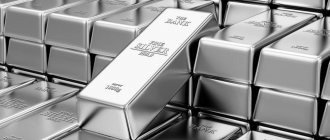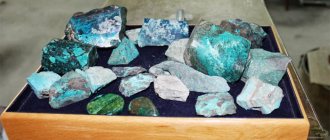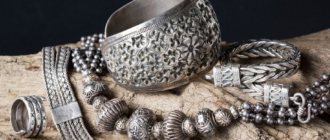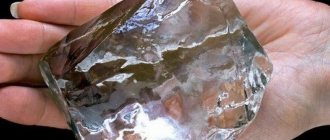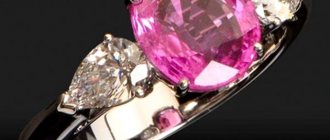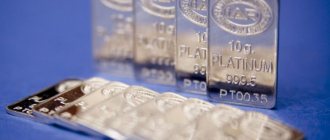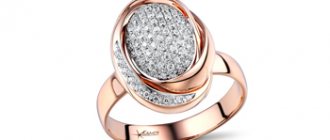For state-owned factories in the Urals, Peter the Great, by a special decree, established the Mining Chancellery, and artillery captain Tatishchev was appointed its head. He was entrusted with the responsibility of building new enterprises, training mining specialists, and continuing the exploration of ore deposits. It was Tatishchev who chose the place for the construction of the ancestor of Verkh-Isetsky - the Yekaterinburg plant - and wrote to the Berg College: I ask for permission to build a production facility with four furnaces and forty hammers. But Tatishchev quarreled with the influential industrialist Nikita Demidov and was refused. The plant was already built by Major General Gennin.
When the enterprise no longer had enough water to operate (the main engine of the machinery in that era was the water wheel), a dam was built further up the river. At first, Gennin planned to use the dam to help the Yekaterinburg plant, but there was so much water in the Verkh-Isetsky pond that he decided to build a small iron-making plant next to the dam. This is how the Verkh-Isetsky plant came into being.
Gennin christened it in honor of the daughter of Peter the Great and Catherine the First, Tsarevna Anna. Just as a daughter helps her mother, the Verkh-Isetsky plant had to help the Yekaterinburg plant. He had to work on cast iron from the Yekaterinburg plant and coal, which was delivered by assigned peasants. Primary sources say that VIZ issued the first critical iron on November 19, 1726 (in 1727 - 306 tons, in the next - 552 tons). At that time, 98 artisans and about five thousand assigned peasants worked at the plant.
In 1736, a blast furnace with two furnaces was built at the plant, and he was able to independently make cannons and cannonballs, cast iron for the production of weapons at the Olonetsky and Sestroretsky arms factories. The produced iron was sent by carts to the pier on the Chusovaya River and then by caravans of ships along the Kama to the Volga. They moved along the “water communication”, sometimes by the force of the current, sometimes by sails, sometimes by hand rowing and horse traction.
The fame of Verkh-Iset iron quickly spread beyond the borders of Russia. The secret of its high quality was that it was smelted from mixed ores: “From the mixture came such good iron that it could only be broken off through great strength and labor.” Five years later, the state not only returned the costs of building the dam, but also received “a net profit of 58,313 rubles 01.1/4 kopecks.”
In private hands
In 1758, VIZ became the first private plant in Yekaterinburg: by decree of the Berg College, it was transferred into the ownership of Count Roman Vorontsov. Vorontsov was the most influential figure at the court of Peter the Third: his daughter Catherine was the emperor’s favorite. Under Vorontsov, a factory pier was built at the confluence of the Treka and Chusovaya rivers, from which a caravan of Kolomenka ships with factory products departed every spring. After the overthrow of Peter, the count, nicknamed “Roman Big Pocket” for bribery, was arrested, deprived of his estates and deported to Moscow.
In 1774, Vorontsov sold the plant to St. Petersburg millionaire Savva Yakovlev (in total, Yakovlev bought and built 22 factories during his life). The enterprise went to the new owner along with the lands for 200 thousand rubles. This happened at a difficult moment for the plant: a considerable part of its workers then joined Emelyan Pugachev.
The visa logo of the 19th century - the stamp “A.Ya.Siberia” with the image of a sable - was familiar to the whole world
The Yakovlev dynasty held the plant for 144 years. They became the heyday of the enterprise. The plant was three years younger than Yekaterinburg, developed as a separate city and in many ways surpassed its older brother. Judge for yourself: the first pleasure boat, the first velodrome, the first football fields, the first hippodrome, the first folk theater, a model hospital with a pharmacy and a huge pathological-anatomical collection, churches, schools, a fire department, an almshouse, an orphanage and even a temperance society.
The talented architect Mikhail Malakhov designed the Main Factory Office with an almost Admiralty spire, a dam, and a decorated workshop colonnade. The ensemble of industrial architecture in the style of Russian classicism created at VIZ became the largest in Europe. Newspapers of that time about. Emperor Alexander the First, who visited Yekaterinburg in 1824, personally forged a nail on a VIZ.
This period of VIZ development is also associated with the arrival of engineer Grigory Zotov, one of the most famous characters in Ural industrial history. It is little known, but it is a fact: the artistic traditions of shaped iron casting were founded at VIZ. Zotov was the first to attempt to produce decorative items of “small plastic”: animal figurines, boxes, candlesticks. 27 years later, this experience, introduced by Zotov along with German technologies at the Kasli plant, became the basis for the development of a unique artistic craft in the Urals. Office chairs, tables and chairs, and furniture fittings were cast from cast iron, copper and bronze according to European models.
Marking on the spoon.
22 minutes ago, Vitaly Bano said:
does that mean 5 grams of silver per spoon?, and the year of manufacture is before 1914, since the mark is St. Petersburg
The spoon was made before the storming of the Winter Palace, I can’t say more precisely. and I lied a bit about the quantity and forgot. Here is a translation of the article to understand the physics of the process:
» Numerical stamps on silver-plated objects
The production of silver-plated cutlery on an industrial level began in Germany in the mid-19th century. Two factors limited production: 1. Access to electricity was very limited at the time. 2. Electric current was quite weak compared to our time.
After some experimentation, the researchers found that the best results were achieved when they used a small plating bath, placing one dozen tablespoons and one dozen dinner forks in it and using 90 grams of pure silver and then depositing the silver until the silver anodes were used up and the silver settled firmly on the cutlery. This was time consuming and made the finished items quite expensive in the beginning. The engineers found that slightly more silver was deposited on the 12 spoons than half of the 90 grams used (because they have a larger surface area than forks), slightly less than half was deposited on the 12 forks. Using a large bath would require a much longer plating process, which would make the process even more expensive. Using more than 12 + 12 items in the bath would result in: 1. The items closest to the silver anodes would receive a much thicker plating. 2. The parts furthest from the anodes would receive very thin metallization. Thus, the thickness of the silver layer would differ significantly.
The use of 12 + 12 pieces as described above and 90 grams of pure silver became standard in Germany. The process was registered and these “90” began to be stamped on objects. If companies wanted to produce cheaper cutlery, they used less silver, 60 grams, 40 grams or even 20 grams, which made the plating very thin. Some used more, 100 or 150 grams. “60”, “40”, “20”, “100”, etc. were applied to the objects, respectively.
The plating process was adapted to other cutlery items: knife handles, small spoons, etc., so that the silver layer on them was as thick as on table spoons and forks. Because the same standard process was used, they were all about. New methods made it possible to coat more objects with silver in larger baths in a shorter time using large silver anodes. However, the thickness of the plating remained the same, so the mark remained the same.
As silver-plated cutlery became more available and more customers purchased them, they began asking how much sterling silver their cutlery actually contained. Manufacturers realized they could use the answer as a method to promote sales and began stamping another stamp that roughly reflected the actual grams of silver that coated the item. Unfortunately, they used two different systems: 1. Items that are usually made in dozens (dinner forks, knives, coffee spoons, etc.) are branded with the weight of silver used to plate the dozen pieces with a silver layer. Thus, table forks and tablespoons were marked with a second mark of "45", small objects were marked with a lower number (for example, "35"), since less silver was needed to provide them with the same thickness of plating. 2. Items that were usually purchased individually or in pairs were marked with a silver weight mark on the individual item.
Examples: If you have a tablespoon marked "90" and "45" this means: the standard process as described above was used on one spoon approximately 1/12 of 45 grams (approximately 3.75 grams) of pure silver were deposited. If you have a sugar scoop, oh and the "2" means: again the standard process was used, 2 grams of pure silver was used to coat the item. If you have a pair of salad cutters, each piece is about and the "4" means: again the standard process was used on each piece, 4 grams of pure silver was used.
This German system of marking silver plating was adopted by other European countries, and is sometimes seen on Dutch, Danish and Austrian silver plating."
First in the world
At the beginning of the 19th century, a new product brought the plant worldwide fame - roofing iron sheets. It was bought by England, France, America and their colonies. At least 300 thousand pounds of products were exported to America alone every year. The roofs of the London Parliament and Notre Dame Cathedral were covered with “Visa” iron. In the trading world, Verkh-Iset iron was known as “Yakovlevsky”, had the stamp “A.Ya.Sibir” with the image of a sable and was highly valued for its excellent qualities: it was smooth, glossy, did not require painting, “stood on the roof for a hundred years” . After the fire of 1812 in Moscow, it was placed on all the roofs of the affected city.
In 1863, a mechanical factory was built at the plant for the production of steam engines - this is how the Verkh-Isetsky plant acquired the profile of not only rolling, but also machine-building production. In addition to steam engines, boilers and ore lifts, equipment for the gold panning industry, and by the end of the century, for the railway industry were also produced.
In 1914, for the first time in Russia, VIZ began the industrial production of electrical dynamite steel. This experience anticipated a new stage in the development of the old plant... But first it had to survive the revolution of 1917 and the subsequent civil war. Valuable equipment, machines and tools were taken away, and the workshops fell into disrepair. There was even an attempt to destroy the dam (dynamite was found in its structures), but the workers managed to prevent an explosion.
The plant was nationalized, it received the name “Red Roof”. According to the plan of the first Soviet five-year plan, VIZ was chosen for the development of new products - hot-rolled electrical transformer steel. And in 1929, the company produced the first batch. The Pravda newspaper wrote: “A model transformer for MOGES has been produced using exclusively Soviet materials. VIZ, a veteran of Russian metallurgy, was the first to join the fight for the liberation of the Union from import dependence.” It took Germany 30 years to master the production of high-quality transformer metal; VIZ took less than five. Since 1934, it has fully provided the domestic industry with hot-rolled electrical steel, which surpasses world standards in quality. Thus, the world fame of the products of the Verkh-Isetsky plant was revived with a new trademark - VIZ. Visa workers deciphered this abbreviation as “World Famous Plant”. The trademark, reminiscent of the bend of a steel strip and symbolizing the passage of metal through rolls, remains a recognizable brand today.
In 1931, a scientific laboratory was created at VIZ - the first in the USSR at an industrial enterprise. For a long time it was the only research base in the country for innovations in the production of electrical steels and contributed to a breakthrough in a number of sectors of the economy. Thus, a vacuum electric furnace designed in 1940 at VIZ made it possible to obtain transformer metal with exceptional magnetic properties.
Investments in Antiques and Collectibles.
Investments in Antiques and Collectibles.
This site was created for those who, in our unstable financial times, are trying to save and increase their capital.
Dear Potential Investors! antique bracelet, 14 karat gold diamonds, diamonds, ruby and sapphire
If you are hoping to read here recommendations for purchasing a painting by I.I. Shishkin with suddenly freed up funds, then it’s time for me to learn from you how to make money.
Here we will analyze the Antiques market with all its aspects, influences and trends through the prism of the most ordinary, average person, the average person of our day, far from an oligarch. Manager, housewife, farmer, seller, teacher, doctor and driver, engineer and military man - anyone can become an active player in the Antiques market.
So, let's look at why Antiques are so good and learn some simple tips for properly investing our money wisely.
| Map of site! All sections and articles on one page. | Investments in porcelain , purchase, sale, attribution, stamp makers. | Investments in silver, expert assessment, purchase, sale, attribution, hallmarks and hallmarks of silver. |
Firstly, Antiques are not always a huge investment. You can start with any amount, which is especially important for a novice investor. Try it carefully, delving into the subtleties step by step.
Secondly, we consider Antiques as a lever for capital management, which means we should treat it as “currency”, “shares” and “hectares” (square meters) - the most favorite niches for saving savings. The liquidity of Antiques, like any other asset, is determined by the ability to sell it, and sell it with a profit from the initial investment. This is the only investment that interests us.
Many years of experience in communicating with collectors and their heirs have shown that no one will pay more for the desired item than the collector himself. And what’s interesting is that in 95% of cases, the collection after inheritance is sold at a huge discount from the initial purchases. And this is the third thing you need to think about - don’t plan to pass on your investment purchases to your heirs, they don’t need it, the money will make them much happier. The hassle of “merging” collections is negative; no one will tremble over your exhibits; they will be carried to numerous antique shops, pawn shops, put up at online auctions and discussed on forums.
| Investments in gold. The safest investment. | Luminescence of diamonds Which diamond is more expensive? | Jewelry appraisal free expert appraisal purchase, sale, attribution. |
Important fourth rule: Don’t get attached to Antiques! You don’t “fall in love” with a banknote with Franklin or Khabarovsk, do you? Be prepared to sell your masterpiece at a profit at any time, because it was for the sake of profit that you bought it. If you can’t control yourself, you are a collector, not an Investor.
Fifthly, do not try to suddenly master the knowledge of expert art historians, and even in all areas at once. Read useful literature, visit museums, go to salons and antique shops, wander through flea markets. You cannot suddenly learn something that can only be learned with years and experience. Remember, wherever you are, wherever you are told stories, the Antiques seller has one goal - to sell you an item at a profit. It is towards this goal that your desire is directed when investing in Antiques.
| Authenticity of silver How to distinguish real silver. | Silver hallmarks , attribution, hallmark makers, silver hallmarks. | Silverware is a great gift for any occasion. |
An important sixth rule: never buy something you don’t like. Even if you have read thousands of articles, heard a hundred opinions of respected experts, dozens of friends advised you to buy something, but this something “does not suit your soul” - forget about the subject. Don’t force yourself, let investing in Antiques carry a positive charge. The item will become a part of your everyday life for some time (and sometimes even for a very long time).
It’s so great to use a porcelain set or wonderful silver spoons, wear unique platinum earrings or a gold necklace, and their value and liquidity will not change in any way! An antique object is painted precisely by its age and historicism.
The most important task is not where to buy Antiques, but how to buy real Antiques and buy it at the lowest possible price. Always remember that in order to get a return on your investment, you must know where and how to sell Antiques .
| Painting Investments in art, antique paintings. | Numismatics buying, selling and evaluating coins. | Vintage USSR : fashion trend or future capital? |
Obviously, diversification is also necessary within Antiques itself, which means that you need to choose several directions: silver, jewelry, porcelain, paintings and engravings, icons and copper-cast plastic, textiles and fashion, arts and crafts, books , toys and dolls, coins, East, etc.
Antique gold necklace with emeralds and diamonds
Let me note right away that we do not touch on areas of Antiques that require special licenses for trade or even just possession; we are not interested in anything that goes beyond the scope of the law. Investment without risks and with profit! – this is the key direction.
If, after reading this article, you are seriously thinking about investing in Antiques , then carefully begin to study our recommendations in all areas.
a little nano-advertising
New frontiers
By the beginning of the Great Patriotic War, about 6 thousand people worked at the Verkh-Isetsky plant - and two thousand went to the front. The production of transformer and dynamic steel had to be stopped - the country needed other products. In the shortest possible time, VIZ mastered the production of more than one hundred grades of military special steels. Already in the winter of 1941, the plant was pouring metal for tanks, airplanes, machine guns and military telephones. Two thousand mines, more than a thousand grenades, and a quarter of a thousand shells came out of the workshops per day. In the mechanical shop they started producing parts for the guards' mortars - the legendary Katyushas, and in the sheet metal shop they processed silver for the production of orders and medals. In 1942, for exemplary fulfillment of government tasks, the Verkh-Isetsky plant was awarded the Order of the Red Banner of Labor. Two visa holders were awarded the title of Hero of the Soviet Union: Yakov Tkachenko and Grigory Rechkalov (twice).
In peacetime, VIZ increased the volume of metal produced tens of times. A wide scientific and technical search was underway at the plant. In 1947, conventional duo-mills produced particularly thin (0.1 mm) transformer steel, which in the West was produced only by cold rolling. As a result, the first domestic Luch televisions appeared. In the 50s, VIZ became a pioneer in introducing the method of high-temperature annealing in a vacuum, which made it possible to improve the electromagnetic properties of transformer steel by 30–40%. But the most important achievement of that time was the development of the production of cold-rolled electrical steel.
The decision to build a cold rolling shop complex at VIZ was made in 1961, and construction began in 1966. Over the course of seven years, 65 buildings and structures were erected; as a result, the Central Chemical Processing Plant turned out to be larger than the plant itself. On September 30, 1973, on the occasion of the 250th anniversary of Yekaterinburg, the first stage was commissioned, and VIZ began producing cold-rolled transformer steel. In 1976, the plant was awarded the Order of the October Revolution, thus becoming twice awarded the order. In 1978, he was the first in the country to master the production of cold-rolled dynamite steel. The Central Chemical Processing Plant is still the largest complex in Europe; the design capacity for producing electrical steel is 250 - 280 thousand tons per year. Since the beginning of its operation, the Central Chemical Processing Plant has produced more than 7 million tons of metal.
VIZ-Steel LLC continues the legendary history of VIZ today (see interview with General Director Sergei Makurov, p. 29) and its subsidiary OJSC Verkh-Isetsky Plant, which produces metal products for consumer consumption. Created in 1998 on the basis of the complex, the Central Chemical Processing Plant occupies about 10% of the world market for the production of transformer steel - it is one of the five leading global manufacturers of products of high technological complexity (80% of products are exported to 50 countries of the world). The complex includes a gas shop and an industrial wastewater treatment shop operating through a closed water supply system. It is significant that the pollutants discharged by VIZ-Steel into water bodies account for only 0.1% of the mass of pollutants discharged by city enterprises.
In 2006, VIZ-Steel became part of the NLMK Group and, thanks to this, is implementing a large-scale program of technical re-equipment of production: by 2014, half of the existing equipment will be updated. At sites in Lipetsk and Yekaterinburg, technology for the industrial production of high-permeability steel is being developed for the production of highly economical, energy-saving high-power power transformers.
What does the marking mean?
Typically, the pure composition (999 fineness) of a noble metal (be it gold, silver) is not suitable for the production of a high-quality jewelry product.
The objects obtained this way are too fragile. In order to impart improved mechanical properties and create a more saturated shiny color texture, the composition is enriched by adding parts of non-ferrous metals - this is how alloys are obtained. Marking on a product made of precious metal (including silver) shows the content of precious metal in the alloy and serves to determine its fineness.&
Samples of precious metal alloys for jewelry and other silver items, including cutlery, are established by the legislation of the country. The earliest such standard is the “sterling silver” standard (925) - this is the material for the best silver devices: durable and safest for health (since only copper is added to the composition of 999 silver).
Glorious for dynasties
VIZ's place as a leader in metallurgy was helped and maintained by people - fifteen generations of factory workers. Over almost three centuries, more than a hundred working dynasties have formed at the plant. Representatives of the famous Kabalin-Shchipanov dynasty worked at the plant for a total of over four hundred years. The total length of service of the Chukleyev, Kashevarov-Ivanov, Koshelev, Stafeev dynasties is more than a century.
Visa innovators
The ingenuity and talent of the craftsmen gave the plant the glory of a pioneer. At the beginning of the Patriotic War of 1812, the Verkh-Isetsky plant received a complex government order for the production of artillery shells. But entire batches of cast ammunition were rejected due to poor polishing. Then the factory craftsmen created a special machine “for bringing the cannonballs into caliber”: it gave the projectiles “the smoothest roundness with the best comfort.” The innovation was “ordered to be applied to all Russian factories.” The contribution of the factory workers to the victory of Russian artillery over the “hordes of Napoleon” was awarded a gold medal.
Another factory invention, the movable cylindrical screen or dredge, replaced the manual labor of gold miners.
The Berg College also awarded a gold medal “For Useful” to a new, similar to rolling, method of iron production for producing the first sheets of metal in Russia up to two meters in length and about a meter in width.
Many innovative ideas that were successfully tested at the plant did not receive official status. Thus, the first steam engine in the Urals and one of the first in the country worked at the plant for two years. Mechanic Afanasy Vyatkin assembled it back in 1815 at his own risk without permission from the authorities.
Samples and hallmarks
Fineness is the percentage of silver in a precious metal. It is on every product and is displayed in the form of a mark. More details about metal samples can be found in the table.
| Try | Description |
| 925 | This is sterling silver, which is highly valued. Spoons of this standard keep well and are often found with gold plating. |
| 999 | Not found nowadays because pure metal is easily deformed. |
| 900, 950 | Made in France. |
| 916 | Such products were usually covered with enamel, they were popular in Europe and widespread during the Soviet era. |
| 875 | Popular, but low standard. The metal does not have a yellow tint and loses its beauty over time. |
| 800 | The metal of this sample is used as a material for coating brass spoons. Such silver darkens in air. It is also called yellow silver. |
Today there are spoons of 84 standard. This does not mean that there are only 84 grams of silver per kilogram of the alloy. This digital system has been used previously. Until 1972 in Russia, the sample was measured in spools. Today the 84th sample corresponds to the 875th.


